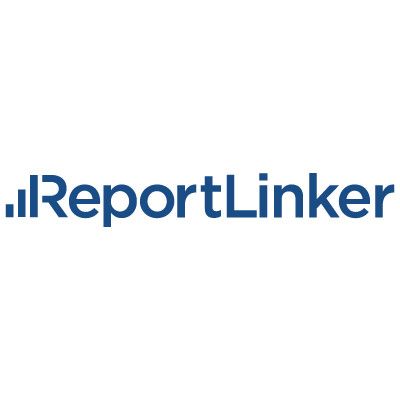Blockchain In Retail Market Size & Share Analysis - Growth Trends & Forecasts (2023 - 2028)

The global market for blockchain technology in the retail industry is projected to experience substantial growth in the coming years. According to a new report released by Reportlinker.com, the market is expected to increase from $0.31 billion in 2023 to $2.62 billion by 2028, with a compound annual growth rate (CAGR) of 52.92% during the forecast period from 2023 to 2028.
The growing desire for openness in the retail supply chain, the speedy and seamless transactions, and the need for enhanced customer support are propelling the expansion of the retail blockchain market.
Main Points: - Blockchain technology is revolutionizing the retail industry by providing transparency, security, and efficiency in record-keeping, provenance tracking, and secure transactions. - The benefits of blockchain in the retail sector have led to an increasing demand and significant market growth. - Blockchain enables faster transactions, eliminates paper-based processes, improves supply chain traceability, and helps filter out counterfeit goods. - Consumer demand for seamless transactions is leading to a rise in e-commerce fraud, and blockchain technology ensures fast, secure, and frictionless transactions. - Blockchain is also driving the adoption of loyalty programs by handling data efficiently and enabling seamless transmission of points across different retailers. - The growing problem of retail theft is fueling the demand for blockchain technology for fraud prevention and detection. - The COVID-19 pandemic initially affected the retail blockchain market, but post-pandemic recovery is expected to provide ample opportunities for growth in the retail segment.
Tendencies of Blockchain Adoption in the Retail Industry
The increasing demand to prevent and detect retail frauds is propelling the growth of the market.
The use of blockchain technology is gaining popularity in various retail operations like supply chains, loyalty programs, and payment processes. This technology helps to prevent fraud, theft, and detection. For example, loyalty programs can utilize blockchain tokens for better fraud protection and optimization. Retailers are also quickly adopting blockchain technology to increase transparency and traceability, thus reducing and preventing fraud in the supply chain. Due to the COVID-19 pandemic, retailers are shifting towards online and omnichannel platforms to improve the customer experience. However, theft is a growing issue in all retail mediums, including in-store, e-commerce, and omnichannel. This has led to a higher demand for blockchain technology to prevent theft and fraud in the retail industry. According to data from the National Retail Federation, in 2022, 69.8% of U.S. retailers reported an increase in fraud in physical stores. E-commerce and omnichannel retailers followed with 61.1% and 53.9%, respectively. Similarly, shoplifting cases involving amounts of USD 5,000 or less increased by 3% in Canada according to Statistics Canada. Retail theft is now a significant challenge for both small and large retail businesses. A study conducted by the U.S. Chamber of Commerce found that over half (56%) of small retail businesses experienced theft from their stores in the past year. These factors contribute to the rapid adoption of blockchain technology in the retail sector. The growing need to prevent retail theft and fraud, along with these developments, will greatly influence the market in the coming years.
The biggest market portion is anticipated to be held by North America.
The blockchain market in North America is expected to have a significant share due to the region's early adoption of advanced technology and the presence of major market vendors like IBM Corporation, Oracle Corporation, Amazon Web Service Inc. (AWS), and SAP SE. These vendors constantly innovate their blockchain solutions for the retail industry to stay competitive. An example is AWS, which offers a reliable and cost-effective infrastructure cloud platform that empowers regional retail businesses. They also have a blockchain network that enables retailers to communicate and authenticate reward information quickly and transparently, without the need for a central authority. Retailers like Walmart are also integrating blockchain technology into their supply chains to improve efficiency. Blockchain offers benefits such as automated supply chain processes, reduced human intervention, and real-time traceability of supplies. Data authenticity is crucial for the retail industry, so many retail businesses in North America are shifting to the cloud for storage. Security is a top priority in this transition. Companies in the blockchain retail market are focusing on developing innovative technological solutions with enhanced security features, which is driving the demand for blockchain in the North American retail market.
Introduction to Blockchain in the Retail Sector The concept of blockchain technology has been gaining immense popularity and attention across various industries, including the retail sector. Blockchain, essentially a decentralized and transparent digital ledger, has the potential to revolutionize the way transactions are conducted in the retail industry. In this blog post, we will explore the overview and significance of blockchain in the retail sector. Let's dive in!
The industry is divided, with numerous established and emerging sellers creating solutions for both online and physical stores of all sizes. Additionally, these sellers consistently engage in fresh and inventive releases for the retail sector, along with forming alliances, consolidations, and takeovers to improve their market influence and range of products. Prominent participants comprise Microsoft Corporation, SAP SE, Oracle Corporation, and IBM Corporation.
In March 2022, SAP and Unilever unveiled a trial version of SAP's GreenToken solution. This initiative aims to enhance the traceability and transparency of Unilever's palm oil supply chain worldwide. The GreenToken acts as a tool for tracking and showcasing information about bulk raw materials, much like scanning a barcode or QR code found on a product purchased by consumers.
The Excel spreadsheet that provides an estimation of the market size (ME) is available for download. It also includes 3 months of analyst support. For more detailed information, please refer to the complete report by visiting the following link: https://www.reportlinker.com/p06483880/?utm_source=GNW
About ReportlinkerReportLinker is a highly acclaimed market research service. Reportlinker discovers and arranges the most recent information on various industries, ensuring that you have immediate access to all the market research you require, conveniently located in a single platform.















